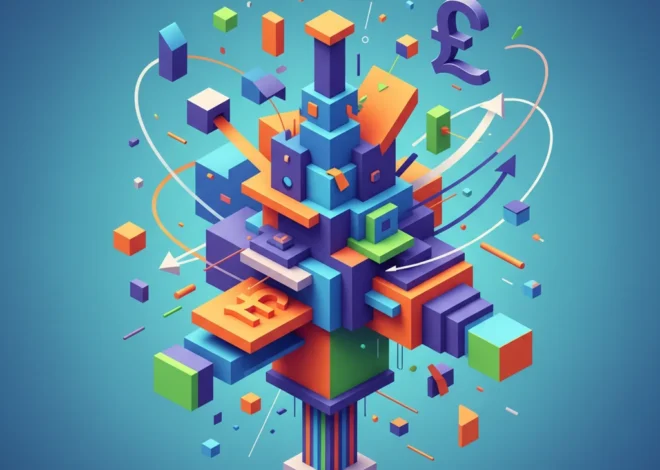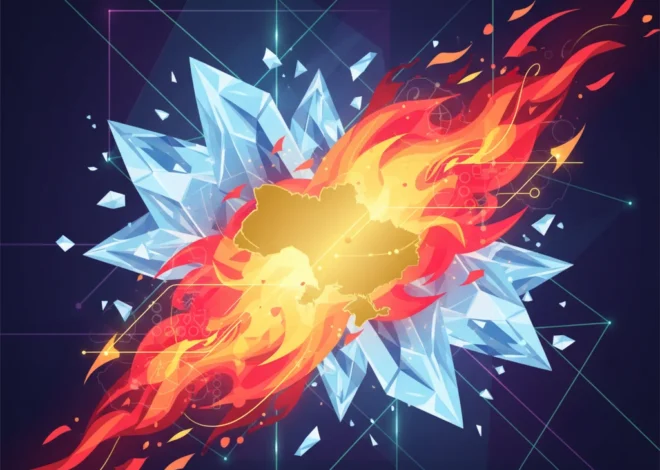
Beyond the Balance Sheet: What a Transylvanian Artist Teaches Us About Value, Risk, and the Future of Investing
In the world of finance, our focus is relentlessly fixed on data. We scrutinize earnings reports, analyze market trends, and build complex models to predict economic futures. We speak a language of P/E ratios, alpha, and algorithmic trading. Yet, some of the most profound insights into value, risk, and human psychology—the very forces that drive the markets—can be found far from Wall Street, in the quiet, contemplative space of an artist’s studio. Enter Teodora Axente, a leading figure of the internationally acclaimed Cluj School of painters in Romania, whose surreal and captivating canvases offer a powerful, if unconventional, lens for today’s investor and business leader.
Axente’s work, a mesmerizing blend of Orthodox Christian tradition and witty surrealism, has garnered significant attention in the global art market. But to see her paintings merely as decorative objects is to miss the point entirely. Her art is a masterclass in exploring the tension between the seen and the unseen, the material and the spiritual, the declared value and the hidden truth. These are themes that should resonate deeply with anyone navigating the complexities of the modern economy, the opacity of the stock market, or the disruptive currents of financial technology.
The Investment Thesis: Art as a Strategic Asset Class
Before delving into the symbolic language of Axente’s canvases, it’s crucial to acknowledge the pragmatic financial case. Fine art has long been recognized as a valuable alternative asset class, offering portfolio diversification and a potential hedge against inflation. Its low correlation with traditional equities and bonds makes it an attractive component for sophisticated investing strategies. The rise of the Cluj School, a loose collective of artists from Cluj-Napoca, Romania, serves as a compelling case study in identifying emerging market value.
Artists like Adrian Ghenie (whose work has sold for millions) and Teodora Axente have emerged from a post-communist landscape to become global art-world powerhouses. As the Financial Times notes, Axente’s vocation is to create these “Transylvanian fantasies” that challenge and intrigue viewers. For an investor, this represents an opportunity to engage with an asset class driven by unique fundamentals: cultural resonance, critical acclaim, and scarcity. While past performance is no guarantee of future results, the art market has shown remarkable resilience. For instance, the Artprice100 index, which tracks the fine art market, has demonstrated competitive long-term returns compared to traditional indices like the S&P 500 (source).
This table illustrates how the principles of art valuation can be mapped to traditional investment analysis, providing a framework for assessing this unique asset class.
| Art Valuation Principle | Parallel Investment Concept | Application to Teodora Axente |
|---|---|---|
| Provenance & Exhibition History | Company Track Record / Management History | Exhibitions in major galleries (e.g., Hugo Voeten Art Center) and representation by established names build a credible history. |
| Artistic Movement & Peer Group | Industry Sector & Market Trend | Part of the highly sought-after Cluj School, benefiting from the movement’s overall market momentum and critical validation. |
| Originality & Critical Acclaim | Unique Value Proposition / “Moat” | Her distinct style blending surrealism and religious iconography creates a strong, defensible artistic identity. |
| Scarcity & Condition | Supply/Demand Dynamics & Asset Quality | As a living artist, her output is finite, creating inherent scarcity for each unique piece. |
Engaging with art requires a different kind of due diligence, one that moves beyond quantitative analysis and embraces qualitative judgment—a skill that is increasingly vital in a complex global economy.
Beyond the Polls: Are Prediction Markets a Threat to Democracy?
Decoding the Canvas: Financial Metaphors in Axente’s Surrealism
The true value of analyzing Axente’s work lies in its potent symbolism. Her paintings are filled with figures shrouded in shimmering, opulent fabrics, their identities obscured. They perform mundane tasks, yet are rendered in a style that feels monumental and mysterious. Let’s explore how these artistic themes serve as powerful metaphors for the world of finance and economics.
1. The Shroud of Opacity
A recurring motif in Axente’s art is concealment. Faces and bodies are hidden beneath luxurious, reflective materials, from gold foil to rich velvets. As she states, this is about “the human being’s need to project a brilliant, ideal image of himself” (source). In finance, this immediately brings to mind the concept of opacity. Complex financial instruments, like collateralized debt obligations (CDOs) or esoteric derivatives, are often shrouded in complexity. Algorithmic trading strategies operate within “black boxes,” their inner workings hidden from view. Axente’s art is a visual reminder for investors to always question what lies beneath a “brilliant” surface—whether it’s a company’s glossy annual report or a revolutionary fintech platform promising frictionless returns. The real risk, and opportunity, often lies concealed.
2. The Tension Between Material and Intrinsic Value
Axente’s work is deeply spiritual, drawing on the iconography of her Orthodox faith, yet it is obsessed with the material world—the texture of fabric, the gleam of metal. This duality mirrors the central debate in investing: market price versus intrinsic value. A stock’s price on any given day is its material manifestation, subject to market sentiment and speculation. Its intrinsic value is a more profound, almost spiritual, measure of its underlying worth. This tension is at the heart of value investing. Similarly, in the age of ESG (Environmental, Social, and Governance) investing, we are increasingly asking questions about the “soul” of a company. Is there value beyond the bottom line? Axente’s canvases compel us to consider that the most precious assets may be those that are not easily quantified.
3. Tradition Disrupted
The blend of classical, almost religious, composition with jarring surrealist elements in Axente’s paintings speaks to a world where tradition and modernity collide. This is a perfect metaphor for the current state of the banking and finance industry. The hallowed, centuries-old institutions of traditional finance are being radically disrupted by nimble, aggressive financial technology startups. The rise of DeFi (Decentralized Finance) on the blockchain challenges the very foundations of centralized banking. Axente’s figures, caught between ritual and absurdity, could be seen as analogs for an industry grappling with its own identity in an era of profound technological change.
The Bihar Paradox: Decoding an Unlikely Election Win and Its Impact on India's Investment Climate
The Economic Soil: How the Cluj School Flourished
One cannot fully appreciate this art without understanding the economic and historical context from which it grew. The Cluj School emerged in the shadow of the fall of communism in Romania. This was a period of intense and often chaotic transition—a society grappling with a new economic reality, political freedom, and a complicated past. This “pressure cooker” environment, as described by art critics, forced these artists to develop a unique and powerful visual language to process their reality (source).
This narrative holds a vital lesson for business and technology. True innovation often doesn’t come from stable, predictable environments. It arises from necessity, from friction, from the collision of old and new systems. The most disruptive innovations in fintech often come from emerging markets where legacy banking infrastructure is weak, forcing innovators to leapfrog existing technology. The story of the Cluj School is a testament to the idea that immense creativity and value can be unlocked during periods of profound economic and social upheaval. For investors, this means looking for the “Cluj Schools” of the business world—pockets of intense innovation flourishing in unexpected corners of the global economy.
The 16Arlington Playbook: Decoding the ROI of Strategic Partnerships in a Volatile Economy
Conclusion: The Investor as Curator
Teodora Axente’s art is far more than a collection of beautiful, enigmatic paintings. It is a rich text for our times, offering a unique commentary on value, perception, and the human condition. For the finance professional, the business leader, or the savvy investor, her work serves as a powerful reminder:
- Look Beneath the Surface: Challenge opacity and question the “brilliant image” presented by any investment or enterprise.
- Balance the Tangible and Intangible: Recognize that true, long-term value is a blend of quantifiable metrics and unquantifiable strengths like culture, brand, and purpose.
- Embrace Disruption: Understand that periods of great change, while unsettling, are the fertile ground from which future value grows.
In the end, perhaps the most valuable lesson is a shift in mindset. Instead of seeing ourselves merely as analysts of spreadsheets, we should also see ourselves as curators of value. A great curator, like a great investor, must possess a keen eye for quality, an understanding of historical context, and the vision to see what something could be worth long before the rest of the market does. By engaging with worlds beyond our own, like the surreal fantasies of a Transylvanian painter, we don’t just broaden our minds—we sharpen the very tools we need to succeed.


